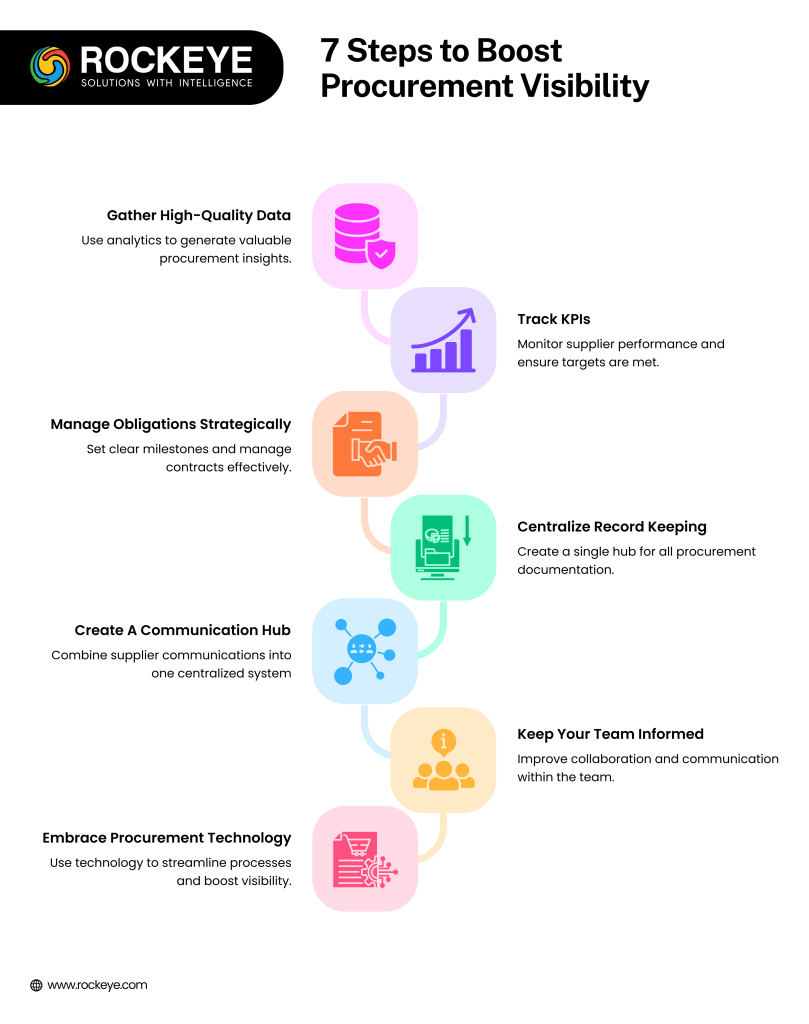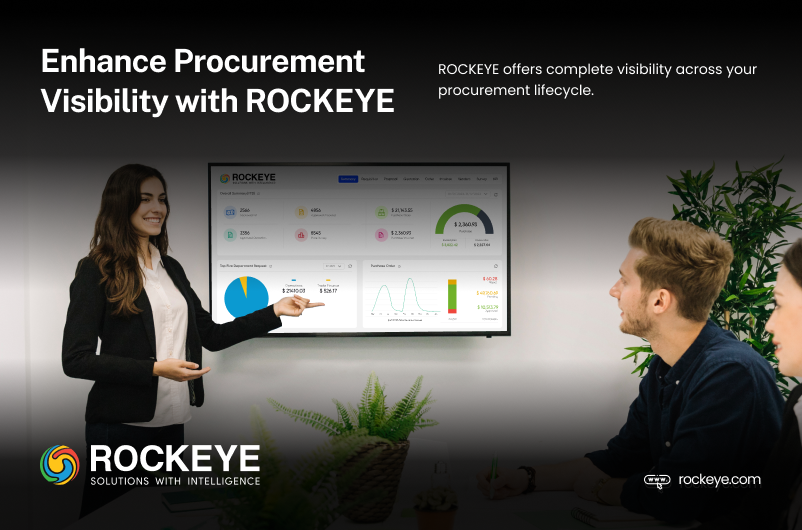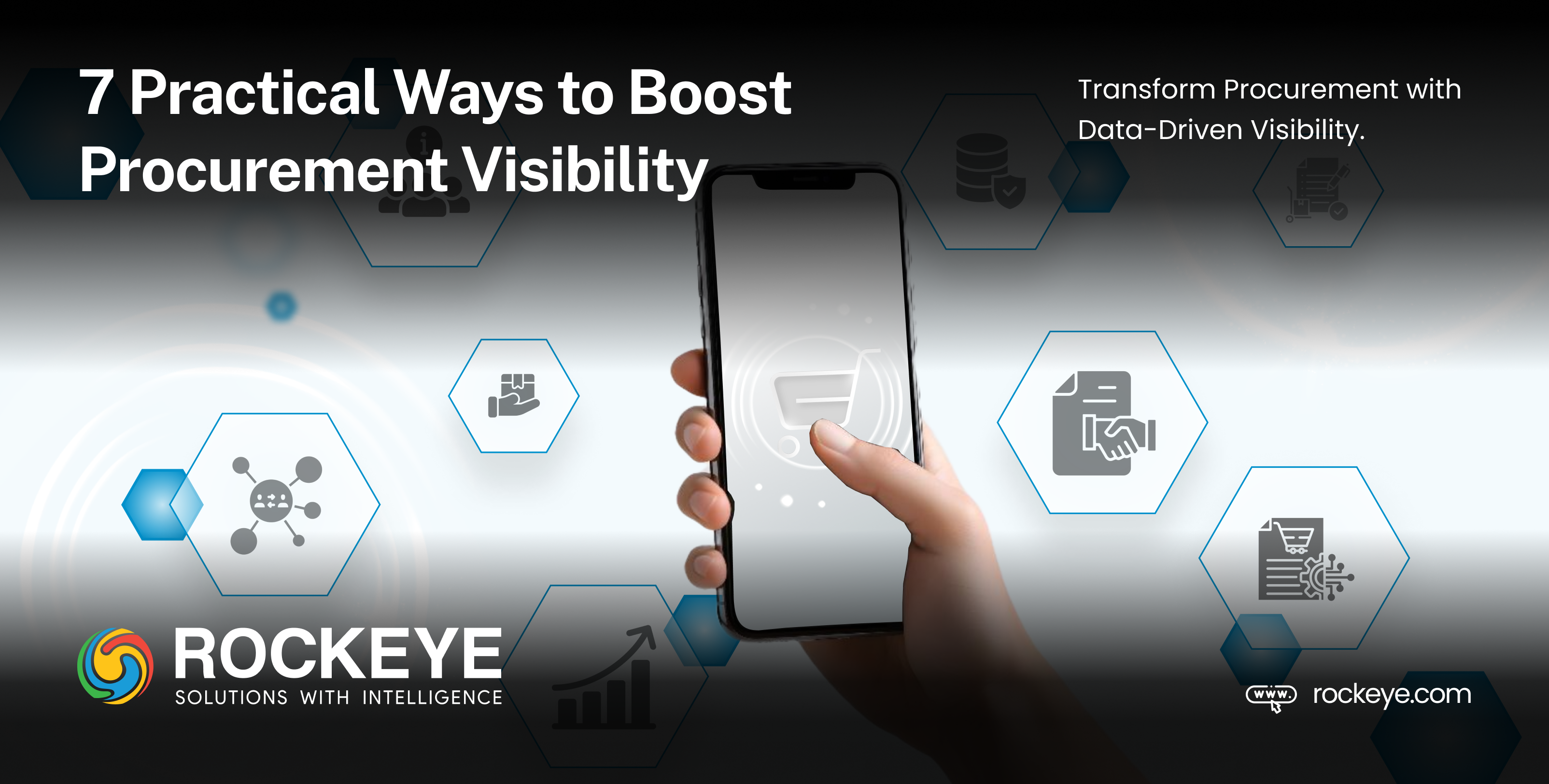With the right ratios of visibility and data combined with a generous dollop of analytics and reporting, your procurement can go from a plain-and-simple sponge to a prize-winning gateaux.
So, what makes visibility the crucial ingredient in procurement success? Well, the fact is, the importance of visibility in procurement can’t be overstated. It can be the difference between a dense, overbaked cake or a delightfully fluffy souffle – or the difference between workers scrambling to meet procurement targets and a cohesive team making data-driven decisions! Visibility across supplier performance, processes and results can make procurement easier, faster and more valuable for your enterprise.
How to increase procurement visibility in 7 steps

From having a high-level view of your procurement processes to digging into granular KPIs, increasing your procurement visibility adds enormous value to your business. Here are our top 7 ways to increase visibility across your procurement lifecycle.
1. Gather and use high-quality data
What: Gathering and analyzing data through advanced analytics allows you to make strategic procurement decisions.
Why: Data provides clarity. Having the cold hard facts at your fingertips is crucial to gaining greater insight into your procurement performance. From compliance to KPI, SLA and performance to trend and spend analysis, data both illustrates your performance and informs future decision making.
How: Use analytics software to view custom data visualizations and generate reports on your procurement performance. Utilize intuitive dashboards and automated reports to view the most relevant and valuable reporting metrics.
Benefit: Data-driven decision making leads to better performance – and data visualization and analytics software make it happen with little to no effort on your part. By utilizing analytics software, automatically-generated reports, and real-time data, you can make strategic decisions in a fraction of the time it would take to manually collate and analyze that information.
2. Track KPIs
What: KPIs are one of the greatest visibility tools at your disposal. By keeping a close eye on key performance indicators with intelligent technology you can easily ensure your goals are being met across the board.
Why: Setting KPIs is all well and good, but you have to be able to track them! Putting in place systems to track, measure and evaluate supplier and stakeholder performance will give you greater visibility over KPIs and help you make faster, better procurement decisions.
How: Software that can generate valuable insights on KPIs/SLAs will ensure you’re aware if each of your suppliers are meeting their requirements. An overview of milestones and automated reminders to ensure suppliers are hitting the expected goals means you’ll be able to monitor and report on supplier performance.
Benefit: Greater KPI and SLA visibility ensure your suppliers and team members are on track to meet their obligations and allows for proactive corrective measures to be taken if required, making everyone more likely to reach milestones.
3. Be more strategic about obligation management
What: Obligation management involves keeping track of both stakeholder and supplier obligations and providing accountability across all required milestones.
Why: Higher visibility means more accountability, so implementing strategic obligation management is vital to keeping things ticking along nicely. Obligation management can provide more transparency over the rights and obligations laid out in your contracts.
How: Milestone and obligation management maps out who’s in charge of what and provides automated reminders when milestone deadlines are approaching, along with a range of other obligation management features.
Benefits: Effective obligation management can facilitate smarter spending and create stronger contracts by clearly defining the rights and obligations of all parties involved.

4. Centralize your record keeping
What: A single, amalgamated communication and record-keeping hub.
Why: Creating and maintaining a robust record-keeping system will provide greater visibility across the entire procurement lifecycle. Breaking down your records by procurement stage, contract type, categories and clients lets you easily access all documentation relevant to a particular project in an instant.
How: With a centralized record management system, you can draft, edit, collaborate and publish documents and log them against their procurement records.
Benefits: Keeping detailed, accessible records means team members can view contracts, read correspondence, track obligations and review KPIs in a single, easy-access location. Especially for industries such as oil and gas, where a robust terminal management system can enhance operational oversight and inventory accuracy.
5. Create a central communication hub
What: A central communication hub as part of your supplier relationship management software.
Why: How many times has a crossed wire or a missed email wreaked havoc on your team? By taking disjointed communication channels and combining them into a central communication hub, you gain greater visibility over communications with suppliers.
How: Supplier relationship management software offers a custom, central hub which can be used to collaborate with suppliers and track ongoing communications.
Benefits: Log communications against suppliers to keep a clear “paper” trail, provide visibility to authorized team members and ultimately build deeper relationships with suppliers.
6. Keep your team in the loop
What: Maintaining an open dialogue between procurement managers and team members keeps visibility and accountability high.
Why: Enhanced information sharing and team collaboration leads to greater visibility and ongoing improvement of procurement processes. When team members can share their knowledge and collaborate with team members it can help identify roadblocks and eliminate common pain points.
How: By providing robust, accessible communication channels and regular touchpoints with management, your team can more easily stay up to date on the latest procurement process updates and provide valuable feedback to help foster improvements.
Benefits: Greater efficiency can be achieved across team members with increased visibility across processes in one central system.
7. Embrace technology
What: The right procurement management software can take your procurement process from good to great. Procurement management software offers contract lifecycle management, strategic sourcing, obligation and milestone management and more in a single solution, along with analytics for greater visibility.
Why: Not only will purpose-built procurement technology provide extra visibility, it’ll also cut out administrative redundancies and boost your team’s efficiency. Procurement technology is the keystone that will support your entire procurement process.
How: Procurement management software takes the disparate aspects of procurement and brings them together into a single, central portal, allowing for greater collaboration and visibility across your organization.
Benefits: Streamlined processes, increased visibility, greater transparency, data visualization.
Elevate your procurement visibility with ROCKEYE
Like the sound of steps 1-7 above? You’re in luck. With ROCKEYE you can implement all the above steps – and countless more – in one fell swoop. Our purpose-built procurement software provides industry-leading visibility across the entire procurement lifecycle process in an intuitive user-friendly cloud-based system.

FAQs
1. What is procurement visibility, and why is it important?
Procurement visibility refers to the transparency and accessibility of data across the procurement lifecycle, including supplier performance, KPIs, and contract milestones. It’s crucial because it enables data-driven decision-making, fosters accountability, and improves efficiency by identifying bottlenecks and opportunities for process improvement.
2. How can high-quality data improve procurement visibility?
High-quality data enables organizations to track KPIs, analyze trends, and generate meaningful reports, providing a solid foundation for strategic decision-making. By using advanced analytics tools, companies can visualize and interpret procurement performance in real-time, allowing them to respond swiftly to market changes.
3. What role do KPIs play in procurement visibility?
KPIs (Key Performance Indicators) are essential in tracking the performance of procurement activities and suppliers. They give measurable insights into supplier performance and help ensure alignment with business goals. By monitoring KPIs, companies can identify underperforming areas and take corrective action promptly.
4. What is obligation management, and how does it enhance procurement visibility?
Obligation management involves monitoring and managing stakeholder and supplier obligations within contracts. By tracking these obligations, companies gain visibility over responsibilities, timelines, and milestones, which improves accountability and strengthens supplier relationships.
5. How does centralized record-keeping contribute to better visibility?
Centralized record-keeping consolidates procurement data into a single system, making it easy for authorized personnel to access relevant documents, track obligations, and review contract terms. This eliminates the need for fragmented records, ensuring seamless visibility across projects and reducing the risk of miscommunication.
- Centralized procurement
- communication hub
- data visualization
- Data-driven procurement
- KPI tracking
- obligation management
- procurement analytics
- Procurement efficiency
- procurement insights
- Procurement lifecycle
- procurement software
- procurement strategy
- procurement technology
- procurement transparency
- Procurement visibility
- record-keeping
- Supplier management
- supplier performance

